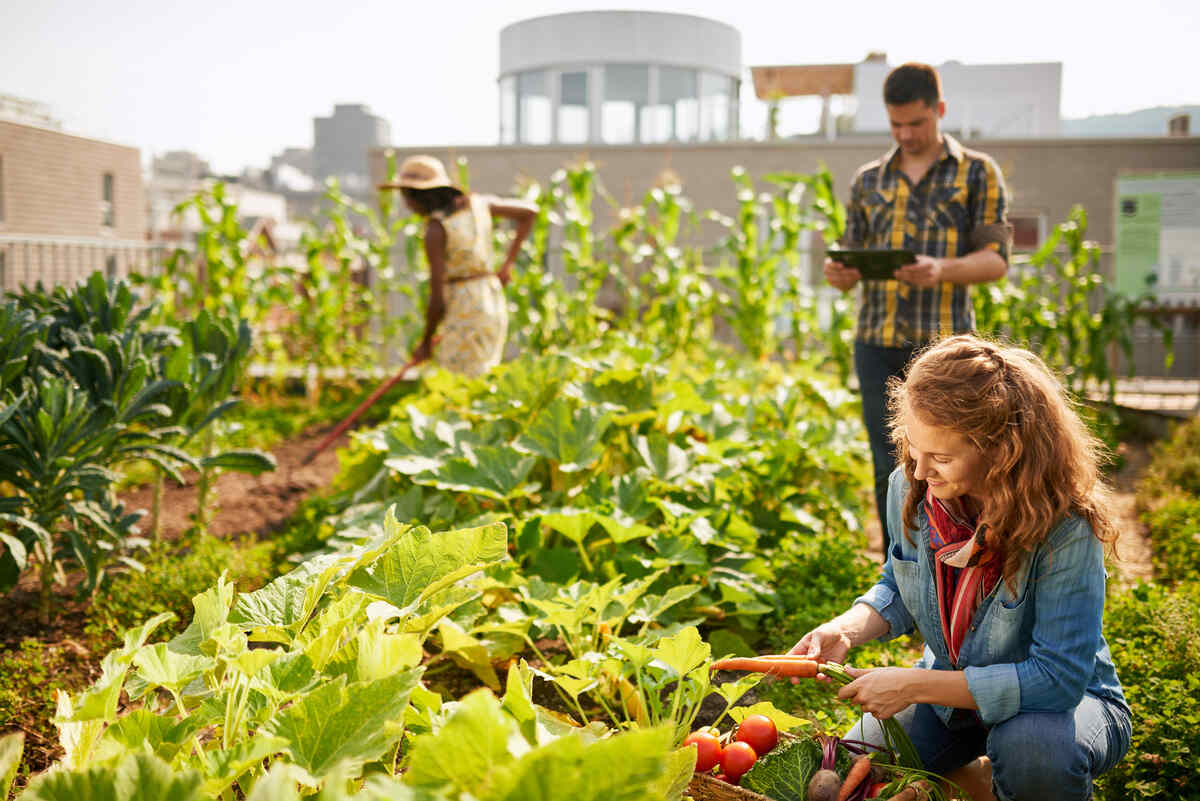More About City Blooming
More About City Blooming
Blog Article
The City Blooming Diaries
Table of ContentsThe Main Principles Of City Blooming City Blooming for DummiesThe Single Strategy To Use For City BloomingMore About City BloomingSome Known Incorrect Statements About City Blooming
Intrigued in growing food for sale in the City of Chicago? Below is a list of often asked inquiries concerning the rules and laws that cultivators should consider when preparing a metropolitan agriculture task.
The zoning change does not change any various other codes handling composting, structure licenses, acquiring or leasing City possessed residential property, service licenses or environmental contamination. There are existing codes that regulate these problems and they continue to be completely effect and might apply to your job. Community gardens are typically had or managed by public entities, civic organizations or community-based organizations and preserved by volunteers.
Urban ranches grow food that is meant to be sold, either on a nonprofit or for-profit basis. Due to their business purpose, metropolitan ranches need a business permit.
City Blooming Fundamentals Explained
The quantity of compost product can not go beyond 25 cubic backyards at any kind of offered time according to the standards in 7-28-715 of the City's Municipal Code. Since the dirt at a lot of new garden sites needs amending, compost, dirt, timber chips, or other materials can be gotten to create or boost the expanding room.

If a building authorization is needed then the hoophouse will certainly be taken into consideration an accessory structure. You can discover out even more regarding the building permit requirements by getting in touch with the Division of Buildings. The 25,000-square-foot size limit is planned to avoid a solitary community garden from dominating an offered block or diminishing the block's existing property or business personality.
The limitation does not use to gardens situated in Public Open Area (POS) areas. Can there be even more than one neighborhood garden that is 25,000 square feet on a solitary block? Fence is not called for, nonetheless, yards that have large car parking locations might be required to mount fence or other landscaping features.
Indicators on City Blooming You Need To Know
B1 & B2 areas require that all industrial usage tasks be conducted indoors. R districts restrict industrial task. The laws show the function and intent of the Zoning Code. Is fencing needed for city ranches? Yes. Fencings might be needed, in addition to landscaping and testing, for particular parking lot and exterior job or storage space locations depending upon location and the certain task happening.
Yes. Urban farms need building licenses and zoning authorizations prior to building and construction. Various click to find out more other forms of city testimonial might be required relying on specific structures, activities, dimension, landscape design, licensing, public health and stormwater administration problems. A lot of these requirements are determined in the project style or permitting process, nonetheless, the candidate might be responsible to individually determine particular licenses or permits that might be required.
The Department of Business Matters and Consumer Security can help identify the specific type of organization license that's needed. Off road parking is needed for a lot of commercial jobs in Chicago. The required number of vehicle parking rooms is based on the number of employees working on site and not the square video footage of the expanding area.
The Best Strategy To Use For City Blooming

Yes. A metropolitan farm can offer garden compost material generated on website, nonetheless, the operation must comply with the guidelines in 7-28-715 of the Chicago Municipal Code. Yes. Aquaponic systems are allowed inside your home on urban farms in several zoning areas. Nevertheless, a zoning testimonial and structure authorization is needed in order to install frameworks or systems and a company certificate is called for as defined above.
Up to five hives or colonies of honey bees may be kept as an accessory use. Beekeepers must sign up with the Illinois Department of Farming. For more details regarding the suggested zoning change you might speak to the Department of Housing and Economic Advancement, Bureau of Preparation and Zoning at 312.744.8563.
Farming in cities and metropolitan areas A metropolitan ranch in Chicago. Urban farming describes different practices of growing. https://soundcloud.com/cityblooming, handling, and distributing food in urban areas. The term additionally puts on the area activities of pet husbandry, tank farming, beekeeping, and cultivation in a metropolitan context. Urban agriculture is identified from peri-urban agriculture, which occurs in backwoods beside residential areas.
10 Easy Facts About City Blooming Explained
It can include a motion of organic growers, "foodies" and "locavores", who look for to form social media networks based on a shared principles of nature and neighborhood holism. These networks can develop using official institutional assistance, becoming integrated right into local town as a "shift town" motion for sustainable city development.
In either situation, the much more straight accessibility to fresh veggie, fruit, and meat products that might be understood via metropolitan farming can enhance food safety and security and food security while lowering food miles, leading to lower greenhouse gas discharges, consequently adding to climate modification mitigation. Several of the first evidence of metropolitan agriculture originates from Mesopotamia.
Report this page